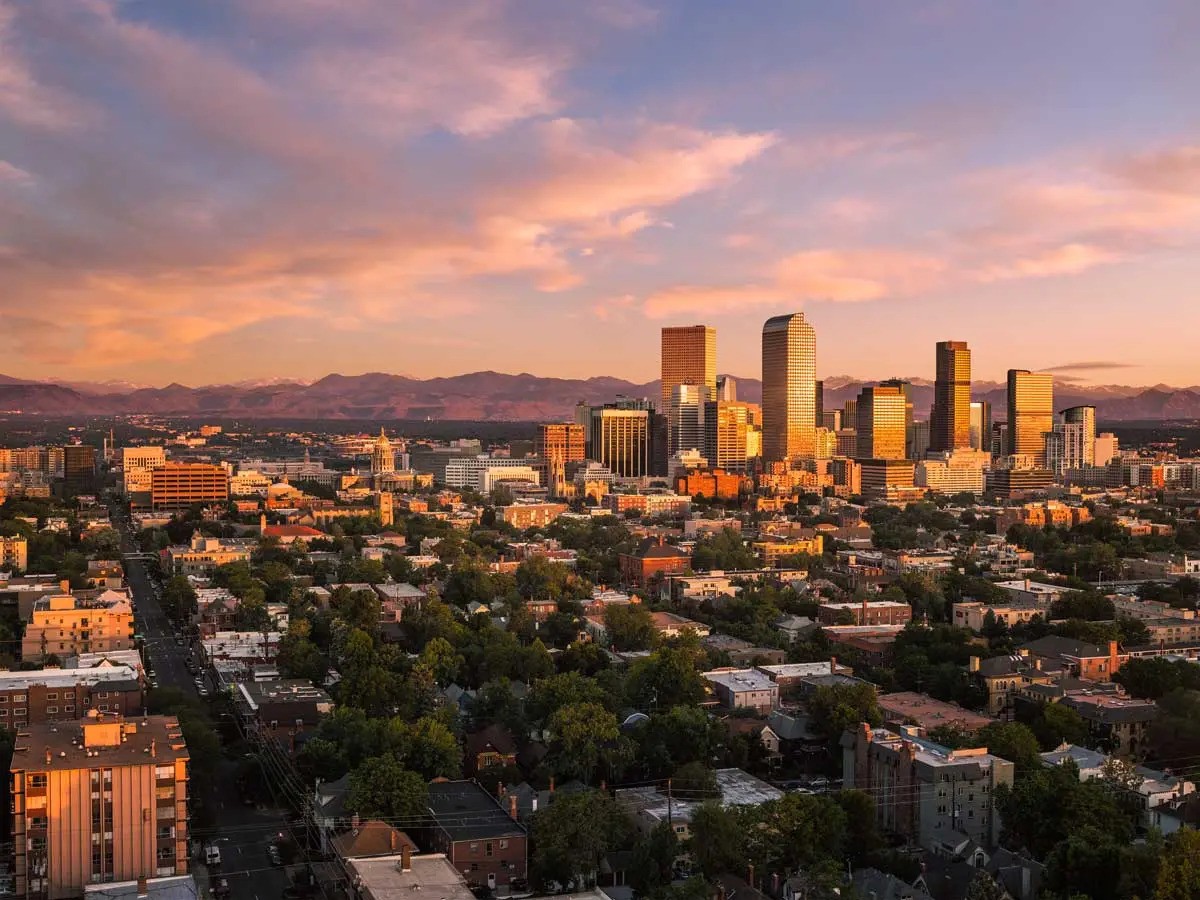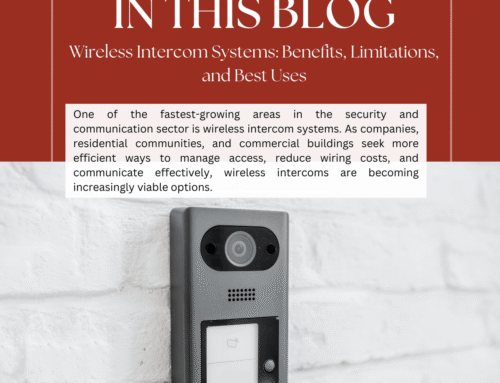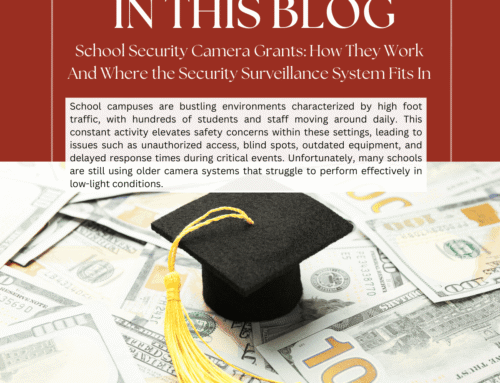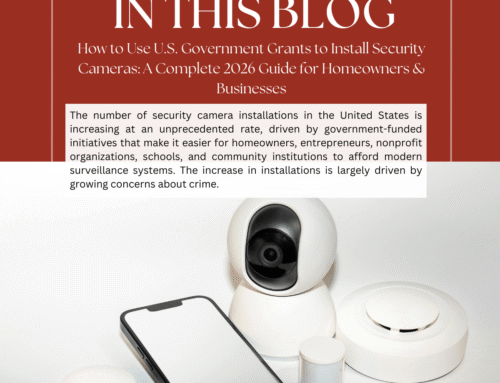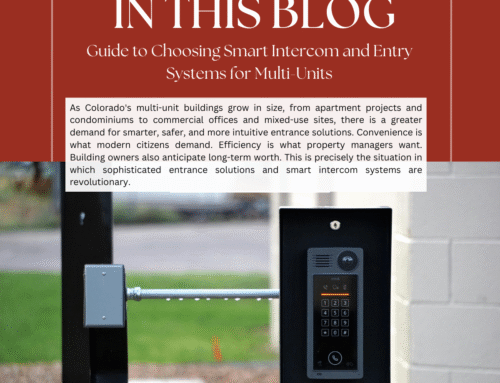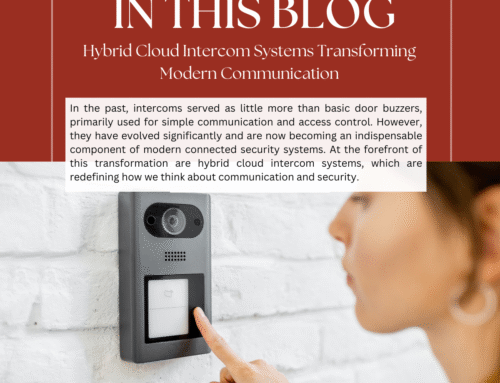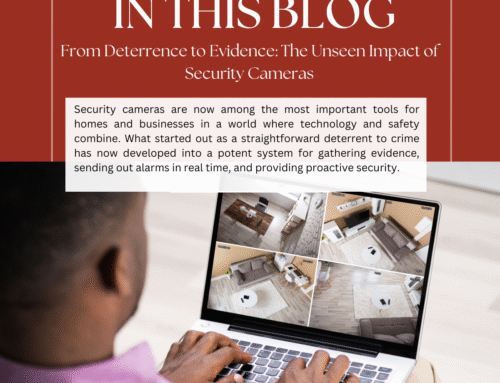Dome vs. Bullet Cameras: Which One Should You Choose?
Choosing the right camera design is not just a technical decision; it is crucial for ensuring that your security system operates efficiently across your entire property. The effectiveness of your surveillance can be significantly influenced by the type of camera you install. For example, a camera designed for indoor use may not perform as well in an outdoor parking lot, and vice versa.
Every location presents unique challenges in terms of visibility, lighting, and security needs, whether you’re monitoring a retail business in Denver, a warehouse in Colorado Springs, or your home in Fort Collins.
Dome cameras and bullet cameras are two of the most popular and reliable options available in today’s surveillance market. Although both types use similar internal technologies, such as sensors, lenses, and processors, their designs and applications make them better suited for different environments. Understanding these differences will help you make informed and confident decisions regarding the security of your property.
What is a Dome Camera?
The sleek, half-sphere “dome” housing of dome cameras gives them their name. It is challenging to tell precisely where the camera is directed because the lens is hidden under a transparent or tinted dome cover.
They are perfect for:
- Indoor spaces such as restaurants, retail establishments, corridors, and lobbies.
- Vandalism-prone locations (the dome is more difficult to tamper with).
- Situations where a modest, low-key look is necessary.
AI motion detection, PoE connection, and infrared night vision are some of the characteristics that make modern dome cameras strong and covert.
What is a Bullet Camera?
Bullet cameras are easily recognizable due to their long, cylindrical shape. They serve as a powerful visual deterrent to potential intruders since they are often installed outdoors and are highly visible.
These cameras are particularly effective for:
– Monitoring gates, parking lots, roads, and external boundaries.
– Businesses that want to make their surveillance efforts clear.
– Long-range surveillance, where a clear line of sight is essential.
Most bullet cameras are equipped with strong infrared LEDs, waterproof housings rated IP66/IP67, and varifocal lenses that allow for focusing on specific areas.
Why Shape Matters: The Real Difference.
The primary distinctions between bullet and dome cameras are not only aesthetic; they have a direct bearing on how well your security system functions under various conditions.
Deterrence and Visibility
- Bullet cameras: They serve as a natural deterrent and are visible from a distance. Criminals are aware that they are being observed.
- Dome cameras: Discreet, ideal for settings where you want to keep an eye on things without drawing notice.
Range and Coverage
- Dome cameras: For smaller or medium-sized areas, they often provide wide-angle coverage.
- Bullet cameras: Designed for long-range focus, these cameras are perfect for outside spaces, including roadways, parking lots, and fences.
Adjustability and Installation
- Dome cameras: Attached to walls or ceilings; installation may take a little longer, but the finished product is more aesthetically pleasing and impervious to tampering.
- Bullet camera: Great for fast installs on poles or building exteriors; simpler to install and adjust manually.
Durability and Protection
Dome cameras are frequently IK10-rated, which means they can withstand vandalism and collisions.
Although bullet cameras are more vulnerable, they are superior in terms of weatherproofing and long-range performance.
Maintenance
Dome lenses need to be cleaned sometimes since they might gather dust or fingerprints. Because of their open housings, bullet cameras require less upkeep but are more vulnerable to dirt and insects in the outdoors.
Selecting Cameras Based on Location
Security Indoors
If you’re setting up cameras in:
- Denver offices or retail establishments
- Centennial or Boulder lobbies
- Hallways, classrooms, or hotel corridors
Dome cameras are therefore the ideal option for you. They are perfect for high-traffic locations because of their broad coverage, low profile, and resistance to tampering.
Outdoor Safety
Bullet cameras are the best option for residential driveways in Lakewood, parking lots in Aurora, and warehouses in Commerce City. They are effective against intruders and weather changes due to their visibility, infrared power, and range.
Numerous Environments
A hybrid system is used by several of our clients:
- Domes inside for aesthetics and complete covering.
- Bullets outside to discourage and guard the perimeter.
This combination guarantees constant monitoring quality and no blind zones.
Key Specifications That Actually Matter
Avoid being overtaken by marketing language while purchasing cameras. Pay attention to these crucial elements:
- Resolution: For crisp details, select at least 4MP or 4K.
- Lens Type: Varifocal for target zooming, fixed for broad vistas.
- Night Vision (IR Range): To ensure low-light coverage, check the infrared distance rating.
- The IP66/IP67 weatherproof rating is crucial for outdoor bullet cameras.
- Vandal Rating (IK08/IK10): Essential for indoor or public dome cameras.
- Power Source: PoE (Power over Ethernet) minimizes wiring and streamlines setup.
- Smart Features: video analytics, people counting, and AI detection for more intelligent security.
Why Most Systems Make Use of Both
The best safety arrangements incorporate both kinds of cameras:
- Domes offer secrecy and protection indoors.
- Outside, bullets offer a deterrent and concentration.
This method, which Security Surveillance System has refined since 2006 for Colorado homes and businesses, strikes a compromise between aesthetics, security, and technological performance.
Smart Accessories That Improve Performance
You may improve your system even more by using:
- Integration of access control (connecting cameras to biometric or keycard entry).
- Network Video Recorder (NVR) for PoE-powered systems.
- Apps for remote monitoring that provide real-time notifications.
- A cloud backup to protect the video even if the recorder is stolen.
Security Surveillance System offers installation, configuration, and maintenance services for these add-ons in Denver, Colorado Springs, and surrounding locations.
The Differences and How to Choose
Dome cameras offer a broader viewing angle, while bullet cameras are known for their extended range. However, the primary drawback of bullet cameras is their vulnerability to vandalism. Unlike dome cameras, which have a protective cover, bullet cameras can be easily adjusted to aim in different directions, potentially capturing areas unrelated to the actual crime.
Both types of cameras can be used in various settings; nevertheless, bullet cameras are better suited for long-range footage, whereas dome cameras excel in providing short-range, wide-angle coverage.
Both dome and bullet cameras are equipped with LEDs to enhance visibility in low-light conditions. They are also designed to withstand harsh weather conditions and high temperatures, making them suitable for both indoor and outdoor use. While both cameras are durable, bullet cameras are more prone to accumulating spider webs and bird nests due to their open design. On the other hand, dome cameras require regular cleaning to remove dust and fingerprints from the glass.
Installation differs between the two types as well. Bullet cameras can be mounted on any wall, which makes them more suitable for outdoor environments. In contrast, dome cameras need to be mounted on ceilings, which could limit their effectiveness when installed outside, as a significant portion of their field of vision might be obstructed by nearby walls.
Frequently Asked Questions.
Q1: Are bullet cameras and domes compatible with the same system?
Indeed. Both camera types are easily supported by the majority of NVR and IP-based systems. To get the best coverage, we frequently combine models at Security Surveillance System.
Q2: In low light, which camera performs better?
Stronger IR LED arrays are a common feature of bullet cameras, which improves their long-range night vision. High-end dome cameras with smart infrared, however, may function equally effectively inside.
Q3: Is it possible to place dome cameras outside?
If they are rated IP66 or IP67, then the answer is yes. For entrances or areas beneath eaves where tamper resistance is desired, outdoor domes are perfect.
Q4: Do bullet cameras have a higher risk of being vandalised?
They might be targeted since they are more accessible and conspicuous. Using anti-vandal housings or mounting them higher can be beneficial.
Q5: Do both kinds of cameras capture audio?
Depending on regional laws and privacy regulations, some models do. Audio recording often needs consent or notification in business situations.
Q6: What is the duration of installation?
Depending on access points and cabling, a standard 4–8 camera system takes 1-2 days.
Q7: Is it possible to watch a video from a distance?
Indeed, mobile access through secure applications is possible with current IP and PoE systems. Security Surveillance System assists in setting up cloud- or NVR-based monitoring.
Q8: Which is more effective at recognizing license plates?
A bullet camera with a varifocal lens and a greater resolution (4MP–8MP) gives faces and license plates finer detail.
Q9: How dependable are wireless dome or bullet cameras?
Wi-Fi cameras are not as reliable for round-the-clock surveillance, but they can function for modest setups. PoE solutions provide more robust, continuous performance.
In conclusion, it’s important to make smart decisions and prioritize safety. Choosing the right camera for your location is essential for protecting your property.
Dome cameras offer wide-angle, durable, and discreet coverage. On the other hand, bullet cameras provide extended range and visibility, serving as a strong deterrent against potential threats. Both types are available through Security Surveillance System, which ensures proper placement and environmental adjustment.
The experts at Security Surveillance System can design a tailored arrangement to protect what matters most, whether you need security for a home in Denver, a business in Colorado Springs, or a warehouse in Fort Collins.


